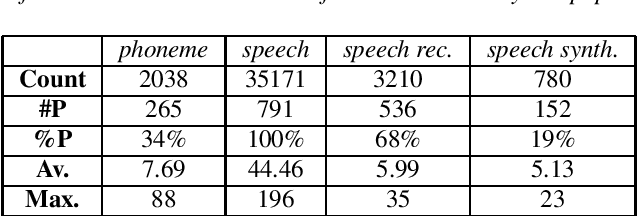Lucy Skidmore
Adapting the NICT-JLE Corpus for Disfluency Detection Models
Aug 04, 2023Abstract:The detection of disfluencies such as hesitations, repetitions and false starts commonly found in speech is a widely studied area of research. With a standardised process for evaluation using the Switchboard Corpus, model performance can be easily compared across approaches. This is not the case for disfluency detection research on learner speech, however, where such datasets have restricted access policies, making comparison and subsequent development of improved models more challenging. To address this issue, this paper describes the adaptation of the NICT-JLE corpus, containing approximately 300 hours of English learners' oral proficiency tests, to a format that is suitable for disfluency detection model training and evaluation. Points of difference between the NICT-JLE and Switchboard corpora are explored, followed by a detailed overview of adaptations to the tag set and meta-features of the NICT-JLE corpus. The result of this work provides a standardised train, heldout and test set for use in future research on disfluency detection for learner speech.
Towards Induction of Structured Phoneme Inventories
Oct 12, 2020Abstract:This extended abstract surveying the work on phonological typology was prepared for "SIGTYP 2020: The Second Workshop on Computational Research in Linguistic Typology" to be held at EMNLP 2020.
On the Use/Misuse of the Term 'Phoneme'
Jul 26, 2019



Abstract:The term 'phoneme' lies at the heart of speech science and technology, and yet it is not clear that the research community fully appreciates its meaning and implications. In particular, it is suspected that many researchers use the term in a casual sense to refer to the sounds of speech, rather than as a well defined abstract concept. If true, this means that some sections of the community may be missing an opportunity to understand and exploit the implications of this important psychological phenomenon. Here we review the correct meaning of the term 'phoneme' and report the results of an investigation into its use/misuse in the accepted papers at INTERSPEECH-2018. It is confirmed that a significant proportion of the community (i) may not be aware of the critical difference between `phonetic' and 'phonemic' levels of description, (ii) may not fully understand the significance of 'phonemic contrast', and as a consequence, (iii) consistently misuse the term 'phoneme'. These findings are discussed, and recommendations are made as to how this situation might be mitigated.
 Add to Chrome
Add to Chrome Add to Firefox
Add to Firefox Add to Edge
Add to Edge